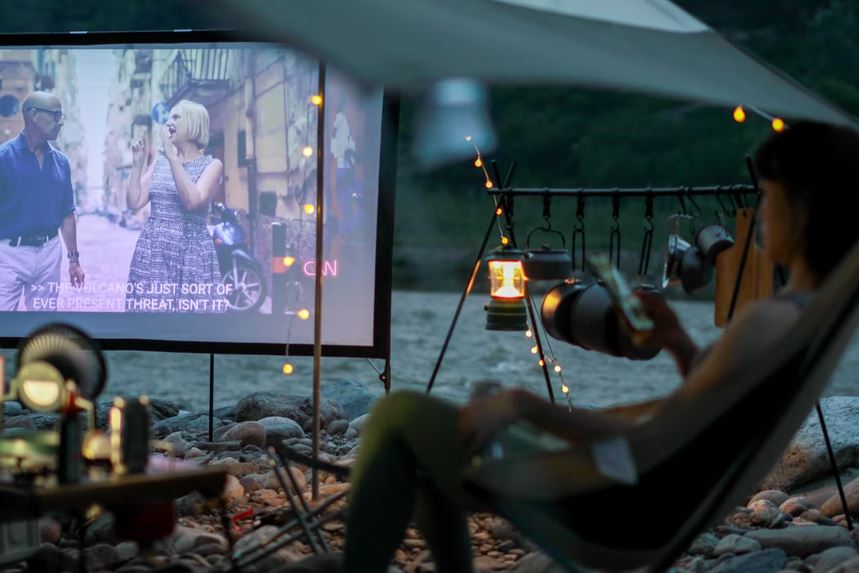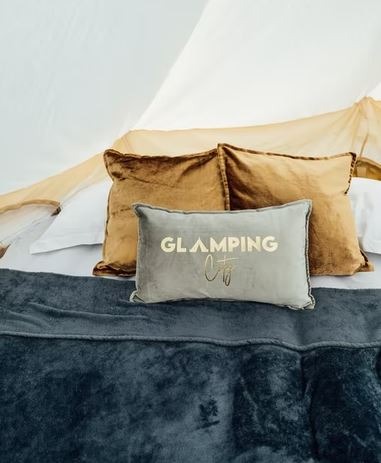Glamping is where breathtaking natural beauty meets contemporary luxury. It’s a way to travel to uncharted and unusual parts of the globe without sacrificing creature comforts. Our travel habits have evolved. We don’t want a one-size-fits-all vacation any longer. We want to travel on our own time and engross ourselves in local culture; we don’t want to just observe nature; we want to live in it. To fully enjoy, try 14 Utah glamping sites you should not miss out. Glamping is a combination of glamour and camping that allows you to truly experience some of the world’s most breathtaking locations.
What is Glamping?
Camping has been around for millennia, but glamping is a relatively new phenomenon. Camping plus glamor, or glamorous camping, is referred to as glamping. To put it another way, upscale camping. While a simple tent and sleeping bag may suffice in most cases, glamping usually entails more luxury and comfort. Perhaps a camper van or recreational vehicle. Perhaps there are alternatives to reading books by flashlight.
For instance, if you add a portable projection screen to your camping gear and have regular movie nights, you may be eligible for your glamper card. However, not everyone wants to spend a fortune on a mega luxury camping or glamping trip, and many people prefer something in the middle. With the correct information and accessories, you can do that while having more fun. If the present situation makes long-distance travel difficult, you can even camp or glamp near your home or right at home.
History of Glamping
The term “glamping” first appeared in the UK in 2005, and it was included in the Oxford English Dictionary in 2016. The term is new, but the concept of “glamping,” which refers to living in a luxurious tent or other camping accommodation facilities, is not. The Scottish Earl of Atholl planned a lavish Highland experience for visiting King James V and his mother in the 16th century. The Duke set up luxurious tents and packed them with all of his home palace’s provisions. The Field of the Cloth of Gold, a diplomatic summit between Henry VIII of England and Francis I of France in northern France in 1520, was probably the most extravagant example of palatial tent-living in history. There were 2,800 tents and marquees set up, and red wine was flowing from fountains. The Ottomans had extravagant, palatial tents transferred from one combat operation to the next around the same time. To set up and preserve these imperial tents, entire teams of craftsmen traveled with the army.
More about the History of Glamping
According to Professor Nurhan Atasoy, the Ottoman sultans’ tents had exquisite adornments both inside and out, making them imposing dwellings fit for a ruler. Tents were used to create a magnificent theatrical setting for ceremonial occasions, as evidenced by mini paintings portraying banquets, audiences, and celebrations held in the imperial tent complex over the centuries. The imperial tents were lavishly decorated, as if they were pavilions, with designs that resembled tiled panels, generally in floral patterns, applied in various colors of cloth or embroidered in varied stitches with silk and metal thread. An African safari became “the thing to do” among wealthy Americans and British in the 1920s, 400 years later. Even adventure-seeking wealthy travelers, however, were unwilling to forego comfort and luxury. Travelers were provided with every domestic luxury while on an adventure, from electric generators to folding baths and cases of champagne.
Types of Glamping
The different kinds of glamping readily accessible are largely dependent on the type of lodging you select. Although traditional glamping is often affiliated with yurts and safari tents, due to its camping origins, there are a plethora of other options. For nature lovers and explorers, glamping pods, cabins, and lodges are a more hardy, all-weather option, whereas shepherd’s huts often offer a more “back-to-basics” approach. Try a treehouse stay or a renovated campervan/caravan for a real ‘wow’ factor when glamping. Unlike other types of glamping, where regular folk repurpose units they no longer use, the latter often have a more personal touch.
1. The Normal Glamping
This is the most prevalent kind of glamping you’ll come across. A queen-size bed, picnic basket breakfast, phone chargers, and a shared bathroom are all included.
2. The City Glamping
Glamping does not always take place in the middle of nowhere. Several astute individuals have begun to offer glamping on the roofs of a few select buildings in major cities. If you don’t mind trading real grass for Astroturf, this is the ideal way to end a big night out on the town.
3. The Experience-based Glamping
Have you ever wanted to camp in the middle of an open-range zoo in absolute luxury? If that sounds appealing, experience-based glamping is the way to go. For those looking for something different, several providers offer package deals for unique overnight adventures.
Benefits of Glamping
There are numerous benefits to glamping. While it may be more expensive than traditional camping, it is usually justified. Many glamping units, such as our glamping pods and cabins, include toilets and showers, as well as a more durable covering than a tent. With that, you should not miss out on glamping and prepare what to expect in Uluru Resort. As a result, glamping is an excellent all-weather option, giving it an advantage over traditional tent camping.
Similarly, while campers are often restricted to a small area of a campsite, glampers may be able to stay in some spectacular locations. Even if you’re staying at a glamping site, your accommodations will usually feel private and isolated from other visitors. Although it may not feel as remote as some shepherd’s huts in the middle of nowhere or treehouses perched high above the ground, a glamping trip may change your perspective.
Eco-friendly Glamping
One of the many advantages of camping is that it is largely environmentally friendly. Glamping doesn’t have to be an exception, and you might discover that it’s more environmentally friendly than you thought.
When comparing a glamping trip to a hotel stay, glamping consistently outperforms eco-friendliness. Many glamping sites have solar panels installed to generate at least a portion of the electricity they require, and they typically use less electricity and water than a hotel stay due to the lower maintenance requirements.
Of course, some glamping sites have compost toilets, spring water showers, and no electricity or Wi-Fi. These are much more environmentally friendly than traditional glamping, but they’re a little harder to come by.
Where can you go Glamping?
Anything is possible with so many locations to go camping around the world, from weekend getaways near me to unique vacations abroad. It’s easy to fill your days with hiking, whitewater rafting, climbing, and even wine tasting when you visit a nature tourism retreat. Outdoor vacations like these can be found in some of the most exciting adventure travel destinations, with plenty of exciting activities nearby. Stop imagining what glamping is like and experience it for yourself.

